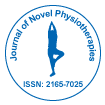Notre groupe organise plus de 3 000 séries de conférences Événements chaque année aux États-Unis, en Europe et en Europe. Asie avec le soutien de 1 000 autres Sociétés scientifiques et publie plus de 700 Open Access Revues qui contiennent plus de 50 000 personnalités éminentes, des scientifiques réputés en tant que membres du comité de rédaction.
Les revues en libre accès gagnent plus de lecteurs et de citations
700 revues et 15 000 000 de lecteurs Chaque revue attire plus de 25 000 lecteurs
Indexé dans
- Index Copernic
- Google Scholar
- Ouvrir la porte J
- JournalSeek de génamique
- Clés académiques
- SécuritéLit
- Recherche de référence
- Université Hamdard
- EBSCO AZ
- OCLC-WorldCat
- Publons
- ICMJE
Liens utiles
Revues en libre accès
Partager cette page
Abstrait
Effectiveness of Constraint-Induced Movement Therapy combined with Mirror Therapy on Upper Motor Functions in Stroke Patients
Nadia Anwar, Sanrong Wang, Lehua Yu, Botao Tan
Background: In all stroke survivors, 70-80% is suffered from motor functional disabilities. Constraint-induced movement therapy is an effective treatment method that has been used for the treatment of motor function in stroke patients. We have combined Constraint-induced movement therapy with another intervention Mirror therapy to assume better and quick results in improving motor function in stroke patients.
Methods and findings: Twenty-four patients with stroke were randomly divided into two groups: Constraint-induced movement therapy combined with mirror therapy group (n=12) and Constraint-induced movement therapy group (n=12). Both groups received interventions for a total of two weeks; (Constraint-induced movement therapy 6 hours per day and mirror therapy for 30 minutes per day) and were assessed by using the Korean version of the Modified Barthel Index scale. After two weeks of treatment, the Constraint-induced movement therapy combined with the mirror therapy group showed greater improvement than the Constraint-induced movement therapy group alone in improving upper motor function in patients with stroke (p<0.01).
Conclusion: Constraint-induced movement therapy combined with mirror therapy showed more improvement as compared to Constraint-induced movement therapy alone in the fine motor functions of patients with stroke.
Revues par sujet
- Agriculture et Aquaculture
- Biochimie
- Chimie
- Food & Nutrition
- Génétique et biologie moléculaire
- Géologie et sciences de la Terre
- Immunologie et microbiologie
- Ingénierie
- La science des matériaux
- Le physique
- Science générale
- Sciences cliniques
- Sciences environnementales
- Sciences médicales
- Sciences pharmaceutiques
- Sciences sociales et politiques
- Sciences vétérinaires
- Soins infirmiers et soins de santé
Revues cliniques et médicales
- Allaitement
- Anesthésiologie
- Biologie moléculaire
- Cardiologie
- Chirurgie
- Dentisterie
- Dermatologie
- Diabète et endocrinologie
- Gastro-entérologie
- Immunologie
- La génétique
- Maladies infectieuses
- Médecine
- Microbiologie
- Neurologie
- Oncologie
- Ophtalmologie
- Pédiatrie
- Recherche clinique
- Soins de santé
- Toxicologie

 English
English  Spanish
Spanish  Chinese
Chinese  Russian
Russian  German
German  Japanese
Japanese  Portuguese
Portuguese  Hindi
Hindi